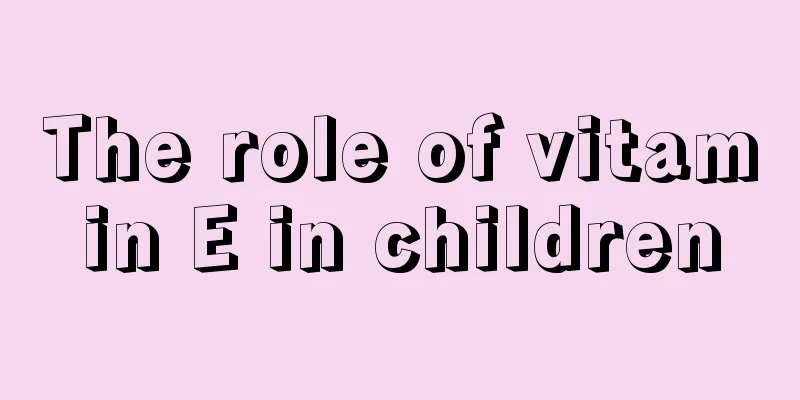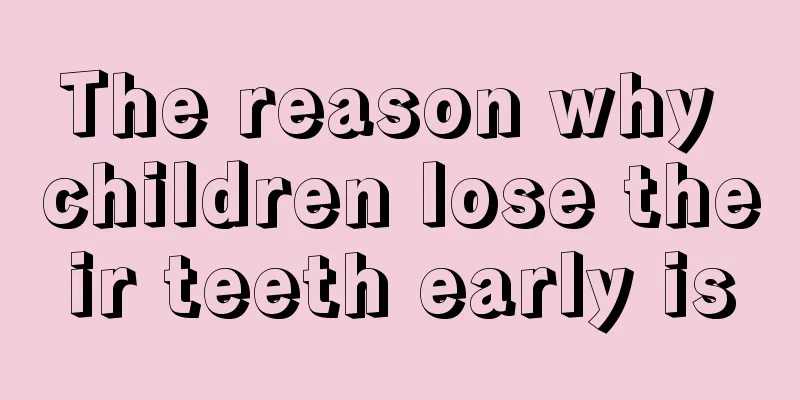The role of vitamin E in children

|
Vitamin E is a fat-soluble vitamin and an antioxidant. Both adults and children need to supplement enough vitamin E. If the human body lacks vitamin E, some adverse symptoms will appear, such as chicken weakness. To supplement vitamin E, you can eat more vegetables, fruits and melons, or you can take vitamin E orally. The role of vitamin E plays an indispensable role for children. What are the roles of vitamin E for children? Let’s take a look at it next. 1. The harm of vitamin E deficiency in children 1. Changes in the nervous system Progressive neuropathy and retinopathy. Spinocerebellar ataxia with loss of deep tendon reflexes, ataxia of the trunk and limbs, loss of vibration and position sense, ophthalmoplegia, visual field impairment, retinopathy also known as retrolental fibrous tissue formation, muscle weakness, ptosis and dysarthria have adverse effects on the cognitive ability and motor development of young children. 2. Anemia It often occurs in premature infants with a birth weight of less than 1500g. Hemolytic anemia usually occurs at 4 to 6 weeks of age. Hemolysis can be stopped by taking vitamin E orally. 3. Edema: Systemic edema is mainly in the lower limbs. Premature infants are prone to neonatal scleredema, which can be relieved after taking vitamin E for 3 days. 4. Intracranial and visceral hemorrhage. Lack of vitamin E during pregnancy may increase the possibility of intracranial and visceral hemorrhage in newborns. Some cases of intraventricular and subependymal hemorrhage in newborns can be improved by taking vitamin E. 2. The role of vitamin E in children
Vitamin E can promote reproduction. It can promote the secretion of sex hormones, increase the vitality and quantity of sperm in men, increase the concentration of estrogen in women, improve fertility and prevent miscarriage. When vitamin E is deficient, testicular atrophy and epithelial cell degeneration will occur, leading to fertility abnormalities. Vitamin E is often used clinically to treat threatened abortion and habitual abortion. It is also helpful in preventing and treating male infertility. Other functions include protecting T lymphocytes, protecting red blood cells, resisting free radical oxidation, and inhibiting platelet aggregation, thereby reducing the risk of myocardial infarction and cerebral infarction. It also has a good therapeutic effect on burns, frostbite, capillary bleeding, menopausal syndrome, and beauty. It has also been found that vitamin E can inhibit lipid peroxidation reactions in the lens of the eye, dilate peripheral blood vessels, and improve blood circulation. Foods rich in vitamins and minerals make up a nutritionally balanced diet, while vitamin E represents an excellent antioxidant effect and a challenge to ageing. Vitamin E can effectively fight free radicals, inhibit the production of lipid peroxides, and remove chloasma; it can inhibit the activity of tyrosinase, thereby reducing the production of melanin. The esterified form of vitamin E can also eliminate excessive oxygen free radicals caused by external factors such as ultraviolet rays and air pollution, thereby delaying photoaging, preventing sunburn and inhibiting the formation of sun erythema. It's easy to increase your vitamin E intake: a plate of fresh asparagus is enough. White, green or purple? It doesn't matter which you prefer, they all have their benefits. Grab your knife and fork and enjoy this vitamin feast. Vitamin E is a fat-soluble vitamin, so it needs a certain amount of fat to prevent it from being digested. Nuts are the perfect snacks. Almonds and hazelnuts are rich in vitamin E and beneficial fats, which can protect your cell membranes from oxidation to a certain extent. Oily foods, such as red palm oil and olive oil, are rich in vitamin E. So, to increase your red blood cell count, choose these healthy and delicious oils when cooking. Vitamin E is found in many foods and makes up the skin of many fruits and vegetables, especially leafy greens like spinach. Of course, avocados are also rich in vitamin E. If you want to better absorb vitamin E, you can eat some fat-rich foods in moderation. 3. Notes Although vitamin E has many benefits to the human body, it should be used according to the symptoms and should never be taken casually. A recent scientific research result shows that the abuse of vitamin E is not only unhelpful to the body, but may also be harmful. Long-term and high-dose use may have potential toxicity, and some may cause symptoms such as cheilitis, nausea, vomiting, dizziness, blurred vision, gastrointestinal function and gonadal dysfunction. If large doses of 200 to 600 mg are taken daily for a long time, it can also induce problems such as thrombophlebitis, pulmonary embolism, lower limb edema, and decreased immunity. |
<<: Tips for two-month-old babies to wake up
>>: What is the reason why babies always sleep restlessly?
Recommend
What causes convulsions in children?
What is Jingzhe? In fact, the occurrence of cervi...
What to do if children have fever and cold
The occurrence of fever and cold in children will...
What tests are needed for precocious puberty
In fact, raising a child is a very difficult thin...
Is steaming suitable for children?
Try not to take children to sweat steam. Even if ...
What is the normal body temperature of a three-year-old baby?
Babies are the people in our lives who need our a...
When does a baby's belly button fall off?
The birth of every new life will bring a lot of j...
What is the reason for the white spots on children's fingernails?
In our lives, we are usually very concerned about...
What is the cause of vomiting and diarrhea in young children?
It is common for young children to get sick at a ...
What is the world like for children with autism?
The world of autistic children is dark. They have...
Dietary considerations for children with nephritic syndrome
Nephritic syndrome in children is generally more ...
What are the signs that a three-year-old baby has a high IQ?
During the baby's growth process, intellectua...
How many teeth should be replaced?
Nowadays, many families have only one baby. Many ...
What to do if your nine-month-old baby has a rash all over his body
Generally, when a nine-month-old baby is covered ...
What should I do if my child has astigmatism? Uncovering effective countermeasures
Today's parents attach great importance to th...
What to do if a child has a clavicle fracture
There are some unavoidable injuries to young chil...









